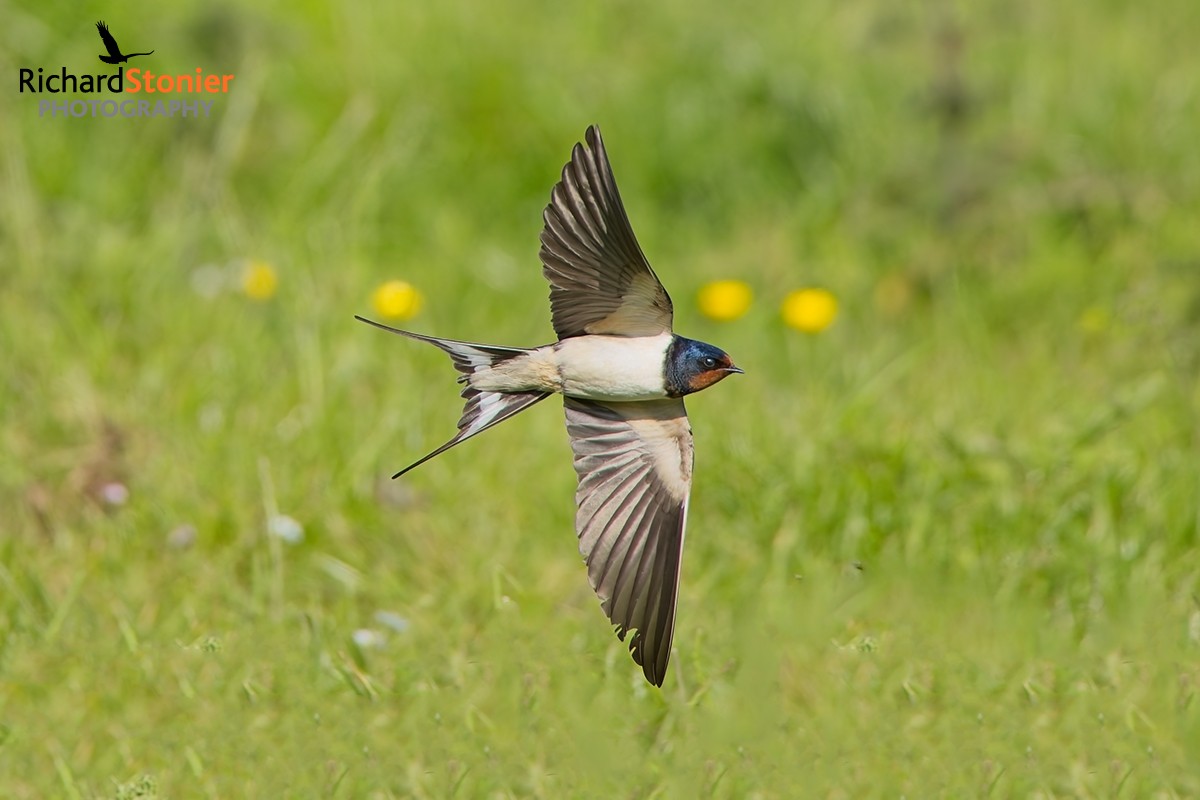Only one Swallow - But sweeping claims?
Can a single geolocator justify bold conclusions about an entire migratory subspecies?

Uncharted Flight Paths Across Asia
Until now, the migratory journeys of Siberian Barn Swallows (Hirundo rustica tytleri) have remained largely speculative, nestled within a broader Eurasian context of more comprehensively studied subspecies. A new study by Anisimova et al., published in the Journal of Ornithology, has for the first time tracked the migration of this subspecies using a light-level geolocator. The results not only fill a significant gap in swallow migration research but also challenge assumptions about the limitations imposed by Asia’s formidable geography.
From a single male tagged in the Selenga River delta near Lake Baikal, Russia, researchers documented an astonishingly direct autumn migration route - bypassing the often-used eastern detour through China. In just two days, this swallow covered over 4000 km, flying across Mongolia and central China to winter in northern Myanmar. Supplementary ring-recovery data from birds originally ringed in the Chita region and later found in Thailand and Malaysia supported this general south-easterly migratory direction.
This route is distinct from other Eurasian Barn Swallow subspecies: H. r. rustica generally migrates to Africa via western Asia, while H. r. gutturalis migrates either to India or the South-East Asian islands. The tracked tytleri swallow, in contrast, appeared to overfly mountainous regions head-on - a path few landbirds attempt.
Defying the Detour: Crossing the Mountains Head-On
The Siberian Barn Swallow’s choice of a direct route over mountainous central Asia sets it apart not just from its close relatives, but also from most songbirds breeding in northern Asia. Species like the Siberian Rubythroat and Yellow-breasted Bunting typically skirt the high ground by detouring east through China, avoiding inhospitable stopover sites at altitude.
Why can tytleri take such a path? The authors suggest it lies in the Barn Swallow’s superb aerial abilities. With long, pointed wings adapted for speed and endurance, swallows are among the most agile of long-distance migrants. Other Barn Swallow populations have been known to cross the Himalayas, and the findings here reinforce the idea that mountainous terrain may pose less of a barrier to swallows than previously assumed.
A Partial Picture from Limited Data
The study was limited by sample size. Of three birds tagged in 2019, only one geolocator was retrieved. Ring recoveries are few and dated, mostly from the 1960s–1980s. Despite this, the converging evidence from direct tracking and ringing archives provides a compelling narrative of a Siberian swallow population that winters consistently in mainland South-East Asia.
Timing estimates from the geolocation data suggest implausibly rapid migration - just two days for the 4076 km southward journey. The authors acknowledge this likely reflects limitations of light-level geolocation, especially on latitudinal flights with minimal longitude change. Spring migration, in contrast, took a more believable 12 days, reinforcing the need for cautious interpretation of timing estimates.
Implications and Next Steps
The discovery of this direct, barrier-crossing route by H. r. tytleri adds a new piece to the migratory puzzle of the Barn Swallow complex. It supports the idea that migratory divides - regions where adjacent populations take radically different routes - are a major feature of the Eurasian avian landscape. Further research is needed in the hybrid zones between tytleri and gutturalis, especially in the Amur region, where birds may show intermediate routes or mixed migratory strategies.
The authors advocate for future studies employing multi-sensor loggers to refine these initial findings and to confirm whether this route is widespread among Siberian Barn Swallows. Given the speed and scale of landscape change across Asia, understanding these routes is vital for conserving both swallows and the ecological corridors they depend on.
A Swallow’s Tale of Flight and Fortitude
This pioneering study lifts the veil on a largely unknown migratory path and reminds us that even well-loved species like the Barn Swallow still have secrets to share. As our tracking tools improve, so too does our appreciation for the stamina, strategy and sheer audacity of these aerial migrants who thread their way across the skies of a continent.
July 2025
Share this story







